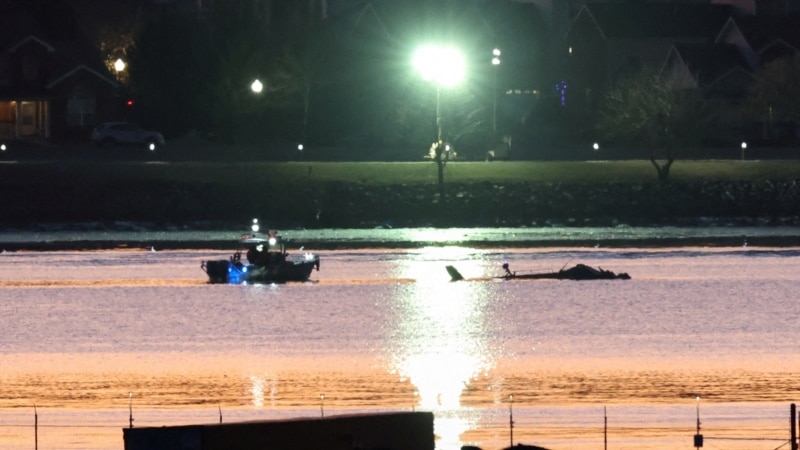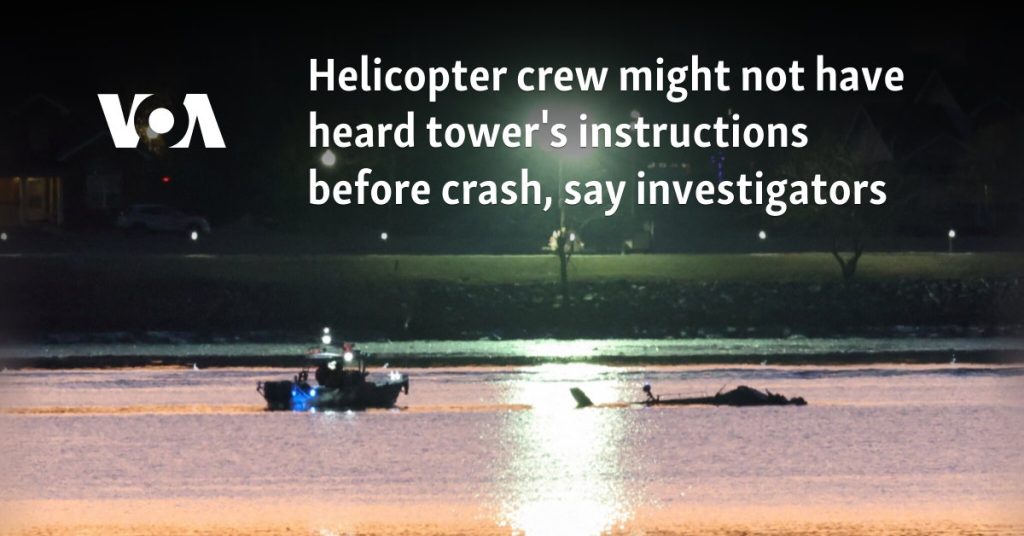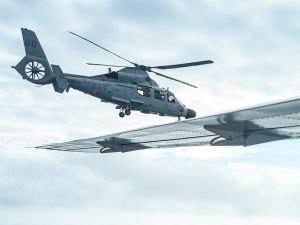
The crew of the Army helicopter that collided in midair with an American Airlines jet near Washington’s Ronald Reagan National Airport may have had inaccurate altitude readings in the moments before the crash, and also may not have heard key instructions from air traffic controllers to move behind the plane, investigators said Friday.
National Transportation Safety Board Chairwoman Jennifer Homendy told reporters that the recording from the Black Hawk helicopter cockpit suggested an incomplete radio transmission may have left the crew without an understanding of how it should shift position just before the January 29 crash, in which all 67 aboard the two aircraft were killed.
“That transmission was interrupted — it was stepped on,” she said, leaving them unable to hear the words “pass behind the” because the helicopter’s microphone key was pressed at the same moment.
The helicopter pilots also may have missed part of another communication, when the tower said the jet was shifting to a different runway, she said.
Homendy said the helicopter was on a check flight that night where the pilot was undergoing an annual test and a test on using night vision goggles. Investigators believe the crew was wearing night vision goggles throughout the flight.
It will take more than a year to get the final NTSB report on the collision, and Homendy warned reporters that many issues were still being investigated.
“We’re only a couple weeks out” from the crash, she said. “We have a lot of work to do.”
The collision was the deadliest plane crash in the U.S. since 2001, when a jet slammed into a New York City neighborhood just after takeoff, killing all 260 people on board and five more on the ground.
William Waldock, professor of safety science at Embry-Riddle Aeronautical University, said stepped-on transmissions — where a pressed microphone key blocks incoming communication — is a well-known problem in aviation.
“It’s an old story and it’s one of the problems oftentimes with radio communications,” he said.
The collision likely occurred at an altitude of about 325 feet, investigators have said, which would put the Black Hawk above its 200-foot limit for that location.
Cockpit conversations a few minutes before the crash indicated conflicting altitude data, Homendy said, with the helicopter’s pilot calling out that they were then at 300 feet, but the instructor pilot saying it was 400 feet, Homendy said.
“We are looking at the possibility there may be bad data,” she said.
That generation of Black Hawks typically has two types of altimeters – one relying on barometric pressure and the other on radio frequency signals bounced off the ground. Helicopter pilots typically rely on barometric readings while flying, but the helicopter’s black box captures its radio altitude.
The radio altitude at the time of the impact put the Black Hawk at 278 feet, Homendy said.
“But I want to caution, that does not mean that’s what the Black Hawk crew was seeing on the barometric altimeters in the cockpit,” she said.
Waldock said the helicopter pilots, with their night vision goggles interfering with their peripheral vision, may have wrongly focused on a plane that took off just before the collision.
“If they did indeed lock onto that departing airplane and assume that’s the traffic they were supposed to be avoiding, they didn’t see the other airplane coming,” he said.
The Army has said the Black Hawk crew was highly experienced and accustomed to the crowded skies around the nation’s capital.








